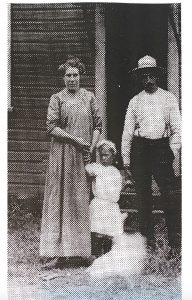The story fo Silverhill, like many settler stories, is one of hard work and determination to thrive. They were often arriving with nothing in their possessions but the clothes on their back. It is known that some Japnese were residing in Silverhill before the 1880s; unfortunately, very little information is available about these families. Brothers Gaetano and Guiseppe Donatelli’s arrived in Silverhill late in the 1880s from Abruzzo, Italy. Also resided in Silverhill was another Italian family the Paduani’s. When Fransico Paduani brought his wife and daughters over, the Donatelli brothers courted them and each married one. It did not take long for Swedish residents to arrive in Silverhill.
In 1910 Syver Lowe, Oskar Johnson, Henry Green, Carl Hernstrom and Jonas Gidlof arrived in Silverhill. These men showed real determination working whenever they could while building their own homes. They also found spare dollars to send back to Sweden to support their families. Also, in 1910, Mr. and Mrs. Oskar Johanson landed in Silverhill along with their children Fred, Stieg, Thora and Hanna.
Anna Erikson shares her story of the long travel time it took to get to Silverhill from Sweden. Her husband had already been in Canada since 1909. She remembers reading letters sent by him back to Sweden about how colourful and green Canada was, very similar to his home country of Sweden. The journey took a very long, but Anna, with her daughter Signe were determined to reach her husband in Vancouver. There was no direct into Canada from Sweden at the time you had to go to Liverpool first, then take a boat to Quebec, then a train to Vancouver. This journey took about a month, and Anna remembers the train from Quebec to Vancouver, packed with all sorts of Scandinavian peoples. The train car had stoves for people to cook their meals on and sounded like a comfortable train ride. She remembers the train being decorated beautifully to celebrate Midsommar Day on June 24th. Within this car, there seemed to be people full of hope and determination, ready to start a new life in Canada.

Left to Right: Anna Ericson, Signe Margaret, Ivar Ericson
It did not take long, however, for Anna and her husband to be taken advantage of while in Canada, by another Swede no less. Mr. Wolf was a man that Ivar Erikson met while living in Vancouver before he finally called Silverhill home. Mr. Wolf had sold Ivar 40 acres of land in Silverhill and also said that Ivar would have the logging rights on his property. Unfortunately, when Ivar, Anna and Signe arrived, their lot was only 20 acres in size. On top of this, much of the land was already cleared. This is not the welcome that Ivar and Anna expected from Mr. Wolf, mainly since he was a Swedish man himself. The home that Anna and Ivar called home became a pit stop for seemingly anyone in Silverhill. Anna remembers attempting to get her children ready for the day while stepping over sleeping surveyors on her floor! This story, to me, speaks volumes about how welcoming the Swedish community in Silverhill seemed to be. Allowing surveyors to sleep within their home is a nice gesture for anyone to offer. Still, when you consider it is city surveyors, this adds volumes to the generosity of the Swedish heart.
Pete Lowe describes Silverhill as he remembers it. Pete was born in Sweden in 1910, arriving in Silverhill on February 11, 1911, with his mother and two brothers. He remembers his closest neighbours being the Hartoti family from Japan. He remembers his mother and Mrs. Hartori getting along very well despite the language barrier. People getting along this well despite language barriers brings up the idea of the melting pot society as opposed to a mosaic.
Many more Swedish families arrived in Silverhill in the coming year, like the Gidlofs, Shugges, and the Lindbergs. Before long, there was a growing community in Silverhill or Japanese, Italian and Swedish. It seems that all these families got along and created some lifelong friendships. This is an important aspect of why Silverhill is such a special place, people of all b backgrounds came with a similar goal and worked together to achieve that goal.